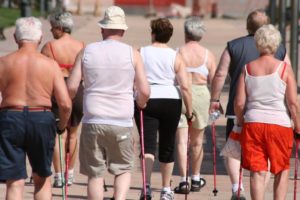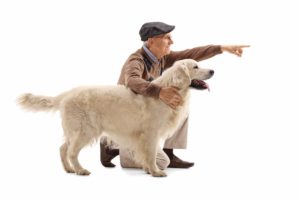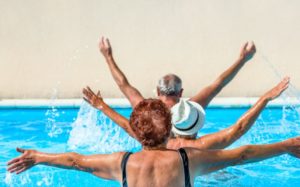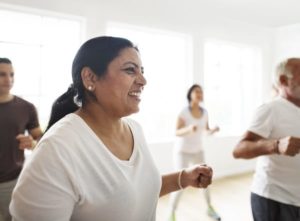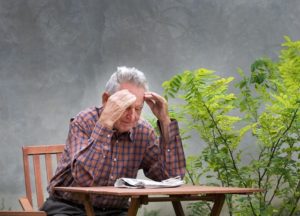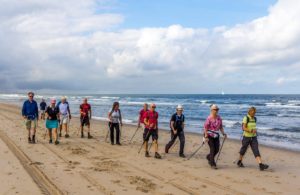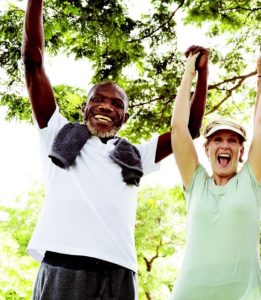Functional Aging/Older Adults
Exercise Helps Obese Older Adults Retain Independence
Research has shown that obesity can limit mobility in older adults. According to a new study published in Obesity (2017; 25 [7], 1199–1205), moderate-intensity exercise may help.
As part of the Lifestyle Interventions and Independence for Elders (LIFE) Study, 1,635 sedentary individuals aged 70–89 completed an exercise- or education-based intervention. The subjects ranged from nonobese (BMI?
Lifetime Physical Activity Trends
What does a 19-year-old have in common with a 60-year-old? Both achieve about the same amount of weekly activity, according to new research.
This information comes from a study of 12,529 individuals aged 6–85 who participated in the National Health and Nutrition Examination Survey. The researchers’ primary goal was to analyze lifetime physical activity (PA) changes via accelerometer data—and their conclusions are disheartening. Here are some key points from the report:
Exercise for Seniors
Certain types of exercise for seniors can lessen the chance that you develop more severe problems from the physical challenges of aging.
Dogs Help Older Adults Move More
Dogs aren’t just man’s best friend; they also make for great activity partners. According to a new study, older adults with a canine friend spend lots more time walking than those who don’t own a dog.
The Functional Movement Screen and Active Older Clients
Study reviewed: Mitchell, U.H., et al. 2016. Performance on the Functional Movement Screen in older active adults. Journal of Sport and Health Science, 5 (1), 119–25.
Tai Chi: The Perfect Balance for Aging Adults
Why tai chi?
These Chinese movement patterns have been around for centuries. In recent years, study after study has proven the benefits of tai chi—particularly for older exercisers—yet most fitness professionals seem to know little about it.
That’s too bad, because just about any fitness client can learn tai chi, and any fitness professional can teach it. Like other types of exercise, tai chi simply requires you to learn its movements and experience its benefits.
Music Listening, Meditation and Brain Fitness
Older adults may be able to enhance memory and brain fitness by meditating or listening to music, according to preliminary research findings reported in the Journal of Alzheimer’s Disease (2017; 56 [3], 899–916). West Virginia University researchers in Morgantown, West Virginia, conducted the study to determine whether simple mind-body practices could boost cognition or improve perceived memory loss among older adults with cognitive decline.
Mind-Body Exercise and Menopause
Are you in menopause? Chances are that you sometimes feel that you are not in control of your body! If you are seeking ways to cope with unpleasant menopausal symptoms, you may want to try yoga and other mind-body practices.
Shirley Archer, JD, MA, 2008 IDEA Fitness Instructor of the Year, an award-winning author and IDEA’s mind-body spokesperson, explains the research and application of mind-body exercise on menopause.
Irritability and Mood Swings
From Stroke to Strength
It’s not often that a personal training client’s initial screening reads “blocked cranial arteries in the left hemisphere, 1 billion destroyed brain cells, inability to speak, and paralysis and loss of feeling in both right limbs.”
Water-Based Weight Loss Programs Help Older Women Manage Knee Problems
Ratcheting up the intensity of water workouts may help women lose weight without exacerbating knee pain, suggests a new study. Knee osteoarthritis (OA) affects around 13% of women aged 60 and older, and the condition can make it painful for them to exercise and lose weight. It can also become a Catch-22, because carrying excess weight can worsen the problem.
Reducing CVD Risk in Older Adults Who Are Obese
Exercise may protect against cardiovascular disease regardless of body mass index, according to researchers from Erasmus University Medical Centre in Rotterdam, the Netherlands.
They examined the health records and activity levels of 5,344 adults aged 55—97. Participants were categorized as normal weight, overweight or obese and were also classified by activity level. The study's purpose was to understand associations among weight, physical activity levels and CVD risk.
Exercise and Pain Perception in Older Adults
Can physical activity help us modulate pain? 2017 findings from Indiana University—Purdue University Indianapolis suggest that physical activity could offer some relief. The study, published in PAIN (2017; 158 [3], 383—90), aimed to determine if physical activity levels could predict how the nervous system interprets and perceives pain. Fifty–one adults aged 60—77 were recruited to participate. Prior to testing, each wore an accelerometer for 7
days to measure activity levels.
Too Much Sitting Accelerates Aging, Dementia Risk
Scientists have linked extended bouts of sitting with increased risk of heart disease; certain types of cancers; pain and injury; early mortality; and more. Two new studies add to the long list of potential risks associated with sitting too long.
Older Adults Will Walk for Money, Charity
Want to motivate older adults to move more? Try offering them financial or charitable-giving incentives.
Sports Participation and Longevity
What’s the best type of physical activity to help your clients reach their golden years? Researchers from the UKK Institute in Finland delved into that question in a recent report.
Stroke Rates Shift Among Boomers, Gen Xers
According to a report published in the Journal of the American Heart Association (2016; 5 [12], e004245), rates of ischemic stroke and heart attack have steadily decreased since the 1950s. New information shows this trend slowing in recent years, with the greatest incidence increase occurring among 35- to 39-year-olds.
Why Older Exercisers Should Try Nordic Walking
Nordic pole walking is a highly enjoyable, easy–to–learn way for exercisers of all ages to get outdoors and get moving. If you're unfamiliar with Nordic pole walking, this primer will provide key reasons why it can be such a good fit for your older–adult clients, in particular.
Heart Disease and Women in Their 50s
For women younger than 65 years old, depression is emerging as a significant risk factor for coronary artery disease (CAD). Researchers from Reading Hospital and Medical Center in West Reading, Pennsylvania, noted the distinction by age in a study presented at the 2016 Annual Meeting of the North American Menopause Society (NAMS) in Orlando, in October. The study included 1,084 women with a mean age of 54.8 years at the beginning; for 10 years, investigators collected data on heart disease and established risk factors in these women.
Yoga Guidelines for People With Glaucoma
People with glaucoma, the leading cause of irreversible blindness in America, may require specific modifications when practicing yoga. As many as 3 million Americans have glaucoma, but only half of them know they have it, according to the Glaucoma Research Foundation.
Aging and Cardiovascular Disease: Exercise to the Rescue!
Our species is long–lived compared with other primates. Chimpanzees, for instance, have a life expectancy of about 13 years versus 78.5 years for U.S. babies born in 2009 (Pringle 2013). Why such a big gap? Pringle says vaccines, antibiotics, sanitation, and access to nutritious vegetables and fruits year round give us a huge edge over our great–ape cousins, as does our acquired ability to fight off pathogens and irritants in our environments.
